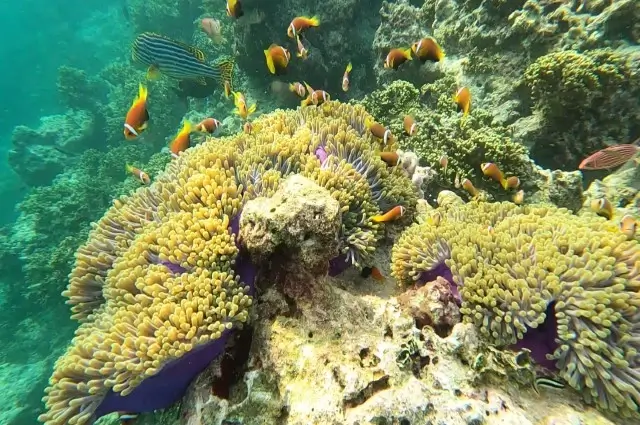Get in touch with our Maldives specialists Clare, Dan, Jo & Liz today by email, contact form or by calling +44 (0)1580 712 690
Coral Reefs
The Maldives is famed for its coral reefs and for good reason. Home to 187 different species of coral, the archipelago is host to some of the most colourful and vibrant formations in the world, attracting divers from across the globe. Divers are not the only ones attracted to the Maldives because of its coral, the reef organisms also provide for 1100 species of fish and sharks, 5 species of sea turtle and 21 species of whales and dolphins. In the Maldives, the providing role of coral is ever more important, as 80% of the archipelago’s land mass is made of the stony organisms. Furthermore, many livelihoods rely on the beautiful reefs through fishing, tourism and indeed the protection against weather that the coral supplies. Despite occupying just 0.l% of the Earth’s ocean surface, Coral Reefs are home to a quarter of the world’s marine life, making their preservation paramount.
Coral colonies are made up of a collection of individual polyps. Relatives of jellyfish and anemone, these ancient creatures are very simple organisms consisting primarily of a stomach and a mouth that is situated on a kind of tentacle. The coral reef networks feed on tiny plankton by stinging them and digesting them. Corals secrete a hard exoskeleton, which builds up the reef around them, offering protection from the tides and eventually forming the islands one can find in the Maldives today.
To learn more on the subject we can highly recommend Netflix's Chasing Coral documentary.
Coral colonies are made up of a collection of individual polyps. Relatives of jellyfish and anemone, these ancient creatures are very simple organisms consisting primarily of a stomach and a mouth that is situated on a kind of tentacle. The coral reef networks feed on tiny plankton by stinging them and digesting them. Corals secrete a hard exoskeleton, which builds up the reef around them, offering protection from the tides and eventually forming the islands one can find in the Maldives today.
Coral Bleaching
Polyps are reliant on sunlight (hence why reefs are mostly found near the surface); although the coral itself does not photosynthesis, they rely on a symbiotic relationship with photosynthesising algae that do. These internal algae provide 90% of the organic nutrients that allows coral to grow and the corals cannot survive without them. When sea temperatures rise and remain more than a couple of degrees above normal, corals eject the algae from within their polyps and lose both their colour and principle source of nourishment. The corals turn white and if the high temperatures persist they will then perish.To learn more on the subject we can highly recommend Netflix's Chasing Coral documentary.
Coral Reefs
Sea Turtles
Manta Rays
Whale Sharks
Indian Fruit Bats
Angelfish
Dolphins
Reef Sharks















